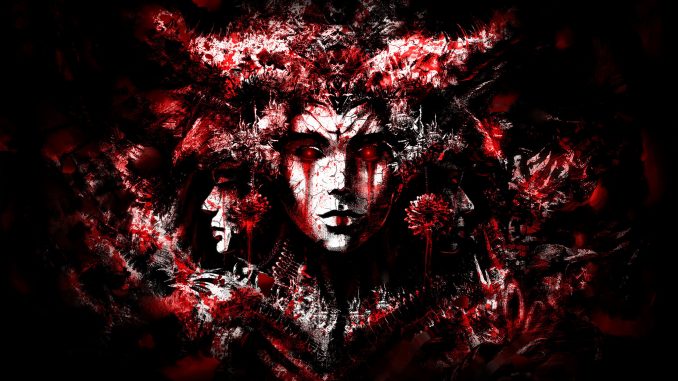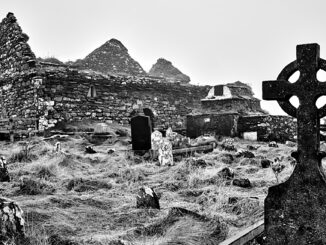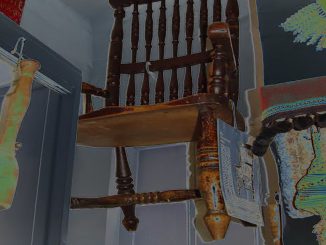
“Begone with you foul creature of the night. The Lord Jesus Christ commands it,” the brave vampire hunter yells as he thrusts the ancient wooden cross of Christ into the face of his undead foe. Upon seeing the holy relic, the vile predator slinks back to shadows from whence it came.
This is a scene that has played out in practically every vampire film or television show that has thrilled horror movie junkies for generations. But believe it or not, dealing with the undead is not by any means a problem facing only Christianity. Judaism and Islam have their fair share of blood sucking fiends.
Part 1: Vampires Of The Islamic World
Throughout the long history of Europe there has always been one constant: empires rise, and empires fall. When the Byzantine empire breathed its last breath, the Ottoman Empire was there to pick up the crumbling vestiges of the old Roman Empire.
For over six centuries, the Ottomans spread their domain over southeastern Europe, western Asia and northern Africa. With this came absorbing the cultures of the people they laid claim to. The Ottomans incorporated architecture, cuisine, music and the legends of the people they encountered.
Some of those legends were tales of vile, blood sucking fiends.
Fiendish Ghouls & Ubir
Two of these creatures with vampiric tendencies were the fiendish ghoul and the bloodthirsty Ubir. These two creatures of the night had their origins in the pre-Islamic world and continued after the founding of the world’s third great religion. According to legend, the ghoul is an inhuman creature said to inhabit either cemeteries or the unbearably hot deserts of Arabia. Although the ghoul may be grotesque to behold, it’s what it does that makes it truly horrific.
The ghoul is said to claw at freshly dug graves where a body was recently buried. When the newly buried corpse is revealed, the ghoul tears the body to pieces, indulges in its flesh and greedily downs its blood. The desert dwelling ghoul lures travelers or lost children into abandoned places in the deep desert where they consume their flesh and blood. The only way to banish the ghoul is through magical incantations and blessed medallions.
Our second vampiric creature comes to us from the Ottoman Empire itself, the dreaded Ubir. The word Ubir can be translated to “bloated”, and this creature is just that. The Ubir is typically described as ruddy and disgustingly bloated from feeding on the blood of its victims. Historians of vampirology believe the Ubir was borrowed from the Slavic lands the Ottomans conquered.
The Vampire Fatwas
A curious tale of vampires in the Ottoman Empire comes to us from the reign of the empire’s greatest ruler, Sulaiman the Magnificent. According to the story, a group of terrified peasants from Rumelia (the Balkans) and Anatolia arrived in the court of Grand Mufti, Ebussuud Efendi Sheykh al-Islam the chief cleric of the empire. These peasants had a bizarre story to tell, and it was nothing short of frightening.
When Ebussuud agreed to see the peasants, they explained to the Grand Mufti that the dead were rising from their graves, walking the land, and feeding on the blood of their fellow villagers. The peasants went further by stating when they investigated the graves of these undead revenants, they found them uncorrupted and smeared with human blood. The villagers feared that if these monstrous beings were not destroyed, they would surely outnumber the living.
Upon hearing their story, Ebussuud was understandably skeptical. He had spent his entire life diligently studying both the Qu’ron and Shariah and could find no reference to whatever these things were. However, just in case these stories were true and these creatures did exist, Ebussuud could not allow such hellspawn beings to exist any longer.
After careful consideration, the Grand Mufti issued a fatwa on the undead beings plaguing his domain. The cleric declared that if a corpse should rise, nail it to the ground. If it should rise a second time, have its head removed and place it between its feet. But if it rises a third time, set the corpse on fire until it is ash. According to Islamic historians, this fatwa remained law until the 19th century when the Ottomans were convinced that nothing of this sort remained in existence, walking the earth and terrorizing the people of the world.

T-Shirts, Mugs and More!
We now have t-shirts, tarot decks, ESP cards, coffee mugs, face masks, and much more merchandise available for purchase. Every dollar spent helps fund Paranormal Study!
Part 2: Vampires Of The Jewish World
“And the wild-cats shall meet with the jackals, and the satyr shall cry to his fellows; yea the night monster shall repose there, and shall find her a place of rest.” Isaiah 34:14
In ancient Judea, the Hebrews had much to fear in the night. It was in the deep desert and dark places best forgotten where ravenous beasts and hideous monsters dwelled. Fiendish creatures of the night with a taste for human flesh and an insatiable thirst for man’s most precious life-giving fluid, blood. Unlike their Islamic neighbors, the Jewish people lived in stark fear of blood sucking fiends.
Lilith
Of all the vampiric demons in Jewish folklore, none is more feared than Lilith. She was a rebellious soul who acted in defiance against god and she was transformed her into the queen of the damned as her punishment.
Although no reference to Lilith can be found in the Old Testament, her story can be found in the Midrash, a text used by Jewish scholars in translating the Talmud. According to the text, Lilith was Adam’s first wife before Eve was created from Adam’s rib. Lilith, like her husband, was created from the dust of the Earth and the two were placed in Eden. The Midrash reveals that Lilith’s time in paradise was short lived and all because she said one simple word, “No.”
As time went by, Lilith grew increasingly intolerant of God’s rules and concluded she would be subservient to no man. One day, Adam, attempted to exercise his sexual dominance over Lilith by forcing her to lay beneath him. Lilith had finally had enough and refused his demand as she believed that she and Adam were created equally. When Adam reported back to God, Lilith became enraged and fled paradise.
This is when the terror began.
When God realized Lilith was missing, he sent three angels, Senoi, Sansenoi and Sammangelof to track his errant creation down. When they found her in a cave, the divine bounty hunters pleaded with Lilith to return to God’s love and the safety of paradise. Lilith violently refused and revealed she was pregnant with the spawn of a demon. The angels then cursed Lilith telling her they would kill one hundred of her offspring as punishment for her rebellion against God. Lilith then became a damned being, a creature of the night, that fed upon the blood of children as they slept.
Researchers of vampiric folklore believe that Lilith was based on the Lilitu, a demonic horde found in Mesopotamian myth. According to them, Lilith, was the world’s first blood sucking fiend.
Nevertheless, Lilith is not the only bloodthirsty fiend found in Jewish folklore. There are others and they are just as terrifying as their queen.
Alukah
In the text of the Sefer Hasidim written by 12th century historian Judah Ben Samuel of Regensburg, we find mention of a vile blood sucker known as Alukah. Alukah, translated from the Yiddish means, “horse leech” or “blood sucking monster” depending upon the translation. According to the Sefer Hasidim, Alukah is a human who can shapeshift into a wolf or other deadly predator. This has led researchers to believe this is an early reference to a vampire’s ability to change its form into a wolf or bat.
The ancient text further described the vampire’s ability to fly by releasing her long hair. If the Alukah is unable to feed on human blood, it will perish and become a demonic creature. Alukah, although human, is associated with the demon queen of ancient Hebrew lore, Lilith.
Astriyah
Our third creature of the night can be found in Sefer Hasidim as well, a vampiric witch known as Astriyah. Astriyah, presents herself as a lovely young woman with long flowing hair and a beauty unmatched by other women. However, when she manages to capture the attention of an unwitting young man, her true nature is revealed. Astriyah’s beauty is transformed into a hideous old crone, and her once beautiful hair turns into tentacles that wraps around her victims, draining them of blood. The only way to destroy this diabolical bloodthirsty witch is by driving a wooden stake through her heart; doing so will keep her in her grave where she will never kill again. The Astriyah is the inspiration for the story, “The Lady and The Peddler,” one of the earliest vampire stories known to exist.
Blood is considered sacred in the bible and anyone who drinks this life-giving fluid is believed to be a monstrous sinner forever outside of the grace of God, just like the blood sucking fiends of Jewish and Islamic lore.
If you found the content in this article to be of any value to your paranormal studies, please let us know in the comments below. Feel free to share this article with your friends as well because if you found it interesting, they might too.
Do You Want To Know More?
Our content creators also have podcasts that go much deeper into paranormal topics.
Tim Woolworth’s Walk in the Shadows, an episodic masterclass that consists of a deep dive into all things Fortean, paranormal and supernatural.
Rick Hale teams up with Stephen Lancaster in The Shadow Initiative where they explore various paranormal topics and discuss current paranormal news.
Please check these shows out and visit Paranormal Study social media to keep up to date on articles and all the things our authors are doing.




Be the first to comment